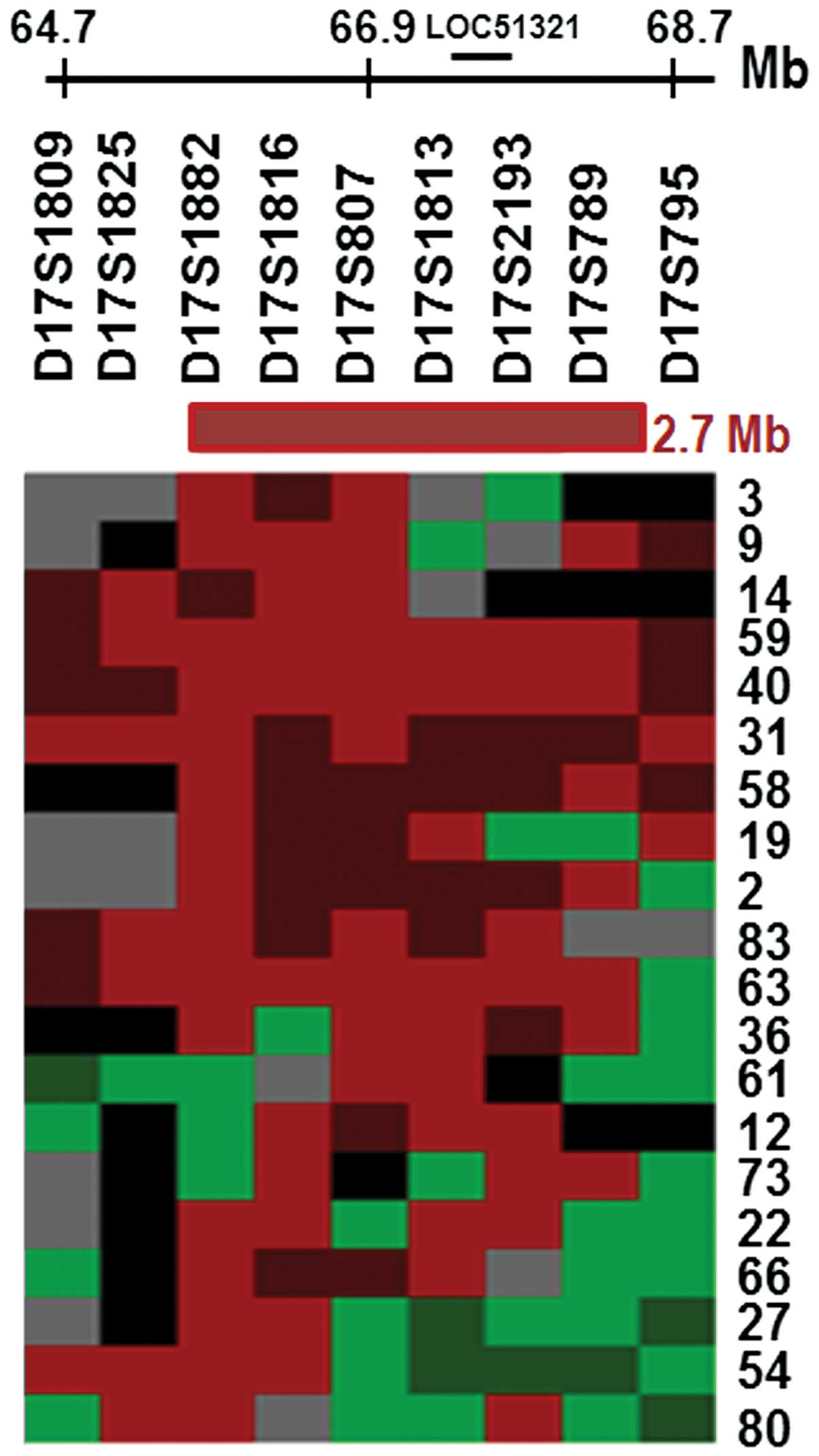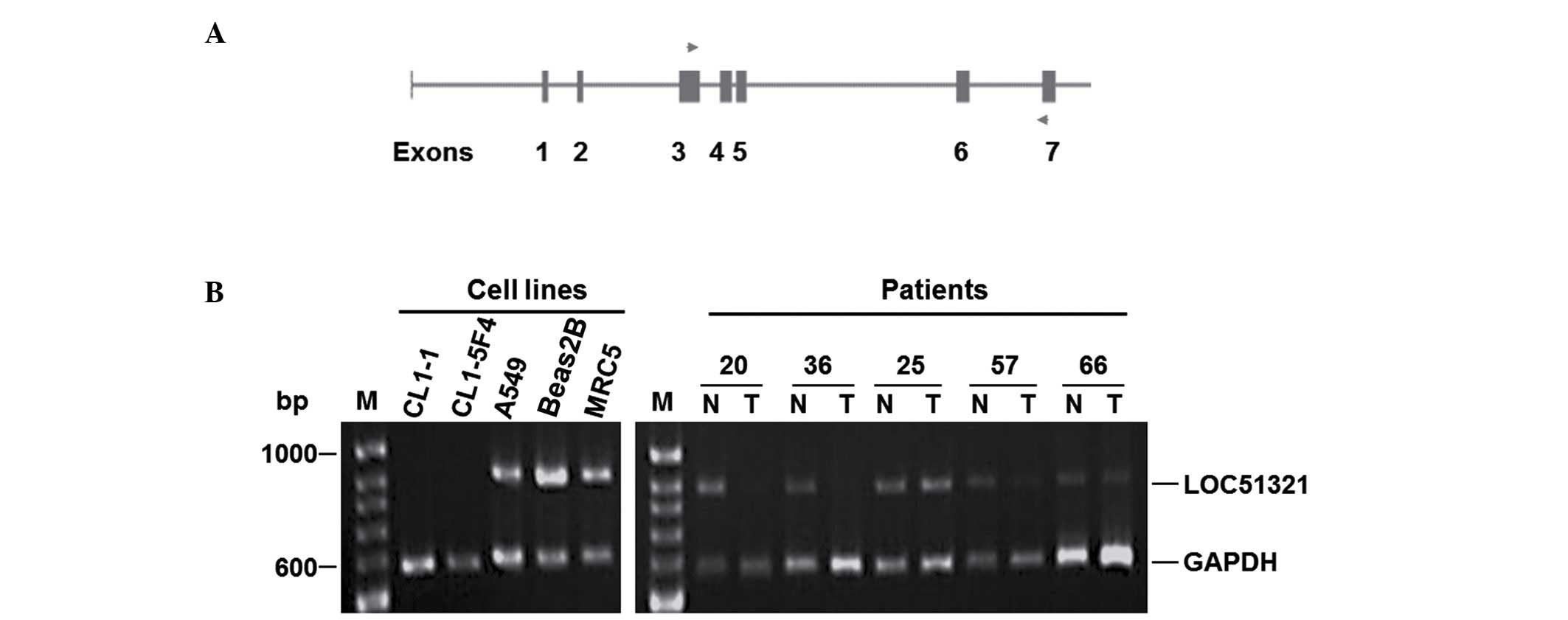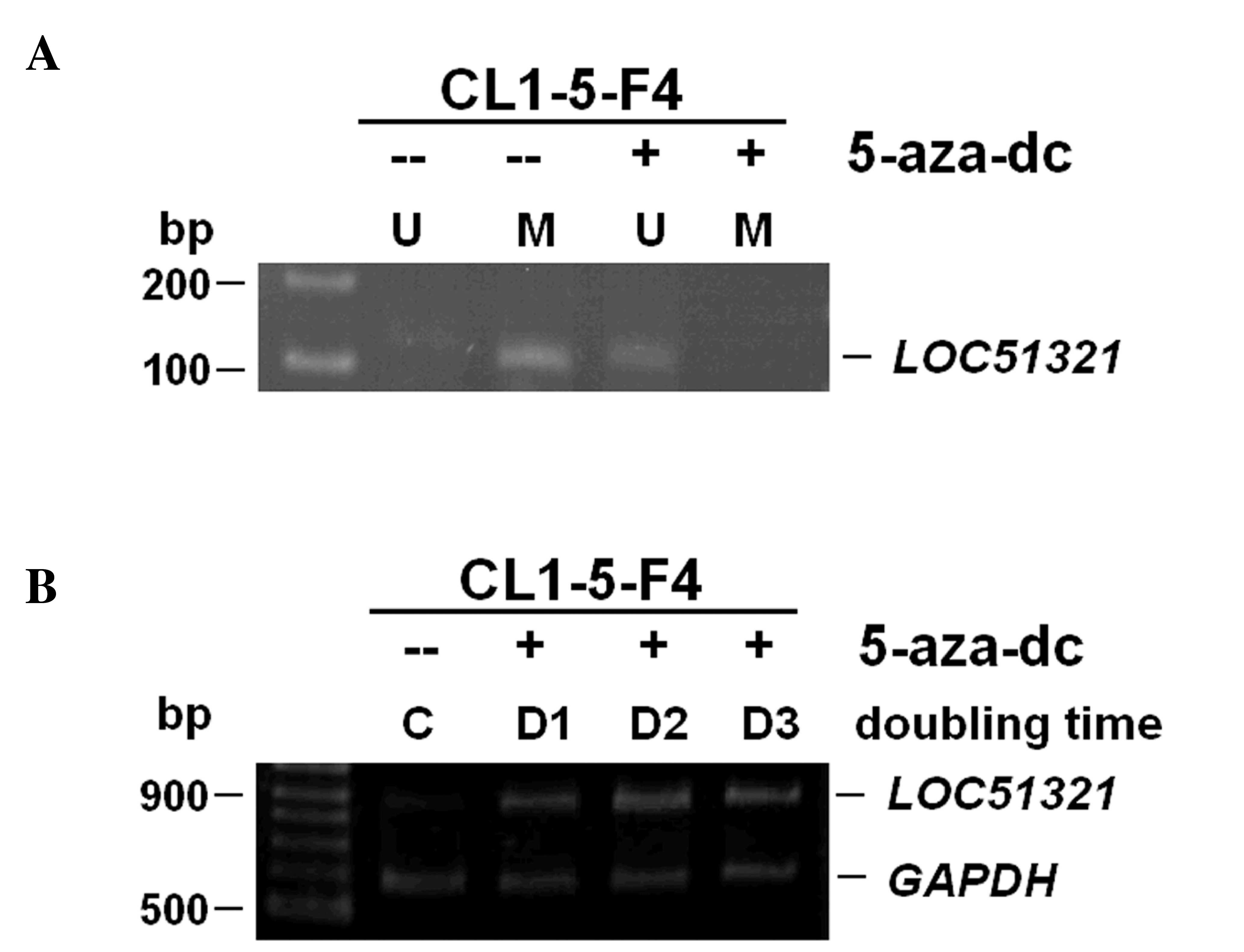Refined-mapping of the novel TSG within the 17q24.3 chromosomal region in non-small cell lung cancer samples
- Authors:
- Wayren Huang
- Yiching Wang
- Woeichyn Chu
- Ruochia Tseng
-
View Affiliations
Affiliations: Department of Biomedical Engineering, School of Biomedical Science and Engineering, National Yang‑Ming University, Taipei 11221, Taiwan, R.O.C., Department of Pharmacology, College of Medicine, National Cheng Kung University, Tainan 70101, Taiwan, R.O.C., Department of Molecular Biology and Human Genetics, College of Life Science, Tzu Chi University, Hualien 97004, Taiwan, R.O.C.
- Published online on: July 5, 2016 https://doi.org/10.3892/ol.2016.4812
-
Pages:
1975-1980
Metrics:
Total
Views: 0 (Spandidos Publications: | PMC Statistics:
)
Metrics:
Total PDF Downloads: 0 (Spandidos Publications: | PMC Statistics:
)
This article is mentioned in:
Abstract
Lung cancer is a leading cause of cancer mortality in Taiwan. It has been previously demonstrated that alterations to tumor suppressor genes (TSGs) are involved in the multi-step carcinogenesis process that results in the development of human cancer, including lung cancer. Both copies of the TSG must be inactivated for their function to be lost. As a result, it is important to search for the genomic regions that potentially contain TSGs and to investigate the etiological association of lung cancer with the allelic deletion of various candidate TSGs. Previous genome‑wide loss of heterozygosity (LOH) data has demonstrated that the chromosome region at 17q24.3 was a novel and frequent LOH region that was associated with non‑small‑cell lung cancer (NSCLC). In the present study, refined mapping using 9 additional microsatellite markers was performed targeting chromosome 17q24.3 by polymerase chain reaction (PCR)-LOH analysis. The allelic loss pattern across 48 available tumors indicates that the minimal deletion region was located between markers D17S1882 and D17S2193 and spanned a distance of approximately 2.7 Mb, reaching 65% LOH at locus D17S1816. A putative gene, LOC51321 (AMZ2), was postulated to be the deletion target on 17q24.3 based on the findings from these NSCLC samples. Reverse transcription‑PCR (RT‑PCR) expression analysis indicated reduced expression of LOC51321 in 54% (7/13) of the NSCLC cell lines tested and 36% (19/53) of the NSCLC tumor tissue samples analyzed. In CL1-5-F4 cells, low mRNA and protein expression of LOC51321 were associated with the promoter hypermethylation, as determined by RT-PCR, western blotting and methylation-specific PCR assays. In addition, treatment with 5‑Aza‑deoxycytosine successfully restored mRNA expression by de‑methylating the putative promoter region in CL1‑5‑F4 cells that lacked LOC51321 expression, but did harbor the relevant methylated promoter. These findings indicate that LOC51321 may be involved in lung tumorigenesis.
View References
|
1
|
Fearon ER: Human cancer syndromes: Clues
to the origin and nature of cancer. Science. 278:1043–1050. 1997.
View Article : Google Scholar : PubMed/NCBI
|
|
2
|
Knudson AG: Hereditary cancer: Two hits
revisited. J Cancer Res Clin Oncol. 122:135–140. 1996. View Article : Google Scholar : PubMed/NCBI
|
|
3
|
Kohno T and Yokota J: How many tumor
suppressor genes are involved in human lung carcinogenesis?
Carcinogenesis. 20:1403–1410. 1999. View Article : Google Scholar : PubMed/NCBI
|
|
4
|
Vogelstein B, Fearon ER, Hamilton SR, Kern
SE, Preisinger AC, Leppert M, Nakamura Y, White R, Smits AM and Bos
JL: Genetic alterations during colorectal-tumor development. N Engl
J Med. 319:525–532. 1988. View Article : Google Scholar : PubMed/NCBI
|
|
5
|
Lasko D, Cavenee W and Nordenskjöld M:
Loss of constitutional heterozygosity in human cancer. Annu Rev
Genet. 25:281–314. 1991. View Article : Google Scholar : PubMed/NCBI
|
|
6
|
Yokota J and Sugimura T: Multiple steps in
carcinogenesis involving alterations of multiple tumor suppressor
genes. FASEB J. 7:920–925. 1993.PubMed/NCBI
|
|
7
|
Gray JW and Collins C: Genome changes and
gene expression in human solid tumors. Carcinogenesis. 21:443–452.
2000. View Article : Google Scholar : PubMed/NCBI
|
|
8
|
Thiagalingam S, Foy RL, Cheng KH, Lee HJ,
Thiagalingam A and Ponte JF: Loss of heterozygosity as a predictor
to map tumor suppressor genes in cancer: Molecular basis of its
occurrence. Curr Opin Oncol. 14:65–72. 2002. View Article : Google Scholar : PubMed/NCBI
|
|
9
|
Tseng RC, Chang JW, Hsien FJ, Chang YH,
Hsiao CF, Chen JT, Chen CY, Jou YS and Wang YC: Genomewide loss of
heterozygosity and its clinical associations in non small cell lung
cancer. Int J Cancer. 117:241–247. 2005. View Article : Google Scholar : PubMed/NCBI
|
|
10
|
Brambilla E, Travis WD, Colby TV, Corrin B
and Shimosato Y: The new World Health Organization classification
of lung tumours. Eur Respir J. 18:1059–1068. 2001. View Article : Google Scholar : PubMed/NCBI
|
|
11
|
Zhao Y, Zhou H, Ma K, Sun J, Feng X, Geng
J, Gu J, Wang W, Zhang H, He Y, et al: Abnormal methylation of
seven genes and their associations with clinical characteristics in
early stage non-small cell lung cancer. Oncol Lett. 5:1211–1218.
2013.PubMed/NCBI
|
|
12
|
Borkakoti N: Structural studies of matrix
metalloproteinases. J Mol Med (Berl). 78:261–268. 2000. View Article : Google Scholar : PubMed/NCBI
|
|
13
|
Shipp MA, Tarr GE, Chen CY, Switzer SN,
Hersh LB, Stein H, Sunday ME and Reinherz EL: CD10/neutral
endopeptidase 24.11 hydrolyzes bombesin-like peptides and regulates
the growth of small cell carcinomas of the lung. Proc Natl Acad Sci
USA. 88:10662–10666. 1991. View Article : Google Scholar : PubMed/NCBI
|













